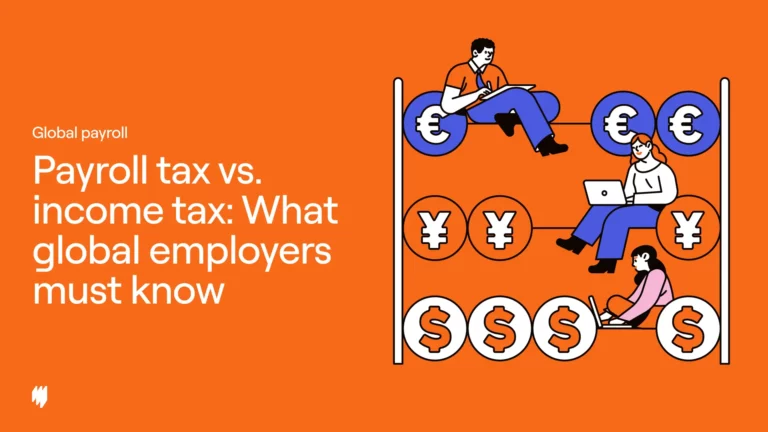As work from home became more common in the last two years, it also turned many people towards self-employment. Since many people lost their jobs, resorting to small businesses and freelancing proved viable for them.
Self-employed individuals are their boss, and hence, they alone reap the benefits of their venture. However, self-employed individuals must also take the sole responsibility of the business, from daily operations to tax filing.
Hence, it is crucial to understand self-employment deductions. This article will simplify how tax deductions work for the self-employed.
Self-employment Tax Deductions
Every self-employed person, freelancer, independent contractors are liable to pay a basic self-employment tax which comprises Medicare and Social Security taxes. However, there is an earning threshold, and part of your income that exceeds this amount is not liable to pay the Social Security Taxes. The annual earning cap is $147,000 for the year 2022.
How to calculate?
- The self-employment tax rate is 15.3%, out of which 12.4% is for Social Security and 2.9% for Medicare.
- While filing the income tax, you can deduct half of your self-employed tax from your net income. The Internal Revenue System will consider that portion as your business expense.
- Use the cash accounting method, where revenues and expenses are recorded with all payment receipts.
There are different ways to calculate business deductions for self-employed that can help to reduce your taxes.
Let us look at some of the self-employment tax deductions list for freelancers, contract workers, and self-employed individuals.
Working from a home office
If you run the business from your home, you could get a deduction on certain aspects like the rent, property taxes, repairs, and maintenance as home office expenses. However, it is only available to the self-employed person and not their employees (if any).
How it works:
There are two ways to file for this deductible part of self-employment tax:
Simplified method:
- You can use this method, provided your home office is not more than 300 square feet.
- Calculate how much percentage of your home is used “exclusively and regularly” for business activity only.
- Multiply it by the IRS-determined rate ($5 per square foot). The most you can deduct is $1500, given the 300 square foot limit.
- This method is beneficial if you are pressed on time and do not have all records of the expenses.
Traditional method:
- The traditional method is also called the self-employed standard deduction.
- This method uses the actual expenses you have incurred and covers several other costs such as furniture, appliances, or any other utilities you spend on.
- You need to keep a detailed record of every expense in the home office.
- Calculate the deduction by completing Form 8829.
Phone and internet bills
Every business requires phone and internet services to run the operations. If you use a dedicated phone and internet connection, it is included in tax write-offs.
How it works:
- Deduct the entire bill of the calls and internet connection if you have a separate line for the business.
- If not, you can deduct a certain percentage used for business purposes.
Health insurance premiums
The premium on your or your family’s health insurance policies are also included. However, the IRS has specific rules. For example, if your spouse is eligible for an employer-sponsored plan, the deduction is not valid.
How it works:
- You need to report a net profit of the year to avail this self-employment tax deduction.
- Claim your premiums as an itemized deduction on Form 1040 federal tax return.
Business travel and meals
Expenses borne on long-distance travel for business purposes such as client meetings or training programs classify as self-employed deductible expenses.
How it works:
- Maintain detailed records of your business-related expenses as the IRS scrutinizes them. For example, the self-employed vehicle tax deduction expenses include the cost of transportation, lodging, and food.
- Meals are limited to 50% compensation.
Car mileage
Personal vehicle usage for business-related activity and visits come under deductions based on the standard mileage rate.
How it works:
- Maintain a mileage log with travel dates, readings, other expenses like oil, gas, repair fees, lease payments, and depreciation.
- Calculate the number of miles traveled for business purposes and multiply it by the IRS rate – 58.5 cents per mile (2022).
Education and training
If you enroll in any formal education or training courses to enhance your business skills, the cost of the classes can be included in self-employment tax deductions.
How it works:
- Only work-related education costs for books, tuitions, transportation to classes are covered.
Start-up costs
This includes the cost of setting up your business, conducting market research, traveling for business, hiring specialists, etc. Professional fees paid by consultants or accountants are also deductible.
How it works:
- IRS prefers deducting major expenses over time as capital expenses.
- Deductions up to $5000 as startup costs are allowed in the first year of active business.
Office supplies
The basic things you require to conduct business can be included in tax write-offs for self-employed businesses. This includes everything, from pen and paper to computer and special equipment.
How it works:
- The cost of regular office supplies is deducted in the tax year.
- For computers, laptops, or other such equipment, the deduction is legible in the year of purchase. This is because the IRS considers them as assets that depreciate over time.
- Though you cannot deduct the entire cost, you can deduct the depreciation.
Credit card or business loan interest
If you use a credit card for business expenses, the interest payments account for the deductible part of self-employment tax. Interest on a business loan is tax-deductible since it is a business expense. However, you must borrow from an actual lender and not someone you know. Also, you must spend the loaned amount for business purposes, failing which it is considered an investment instead of an expense.
How it works:
- For credit card interests, keep a separate credit card for business, so it is easier to maintain personal and business expenses separately.
- The debt must be related to business activity.
- The business interest deductible is capped at $26 million or more in gross.
- You can deduct the interest if you make payments like mortgages, investments, and business loans.
Rent deduction
You can deduct the amount if you rent a space for your business location. Fees for canceling a lease are also deductible expenses.
How it works:
- If you even partially own the property, it is inapplicable.
- If you are related to the owner in any way. It can be questionable.
- The rent amount must be reasonable.
Business insurance
Premiums for any insurance for business protection like fire insurance, credit insurance, or business liability insurance can be deducted.
How it works:
- A part of Schedule C covers deductions of insurance premiums. Conduct basic research on what kinds of premiums are deducted.
Advertising expenses
Costs incurred on promoting your business via ads become a part of self-employment tax deductions.
How it works:
- Advertising to promote a cause is considered a business expense. A blood donation or charitable cause sponsored by your business are good examples.
- Ads endorsing a local lobby or a publication intended for political purposes are not counted.
Retirement savings
Self-employed people have several retirement plans to help in self-employment deductions.
How it works:
- Some beneficial plans include Simplified Employee. Pension-individual retirement accounts (SEP-IRAs) and Savings Incentive Match Plan for Employees (SIMPLE) IRAs. This is beneficial for small business owners.
- Self-employed individuals can dedicate 20% of their total earnings. It is entirely tax-deductible.
- In a self-employed 401(k), maximum contributions are capped at $61,000 for 2022. This applies if you have no other employees.
- The limits differ according to the plan.
Qualified business income deduction
A new addition, the QBI allows individuals to deduct a specific part of their business income on taxes. It applies to those with a “pass-through income,” i.e., the business income reported on personal tax returns.
How it works:
- Single filers must earn a total income equal to or below $170,000 and joint filers equal to or below $340,000 in 2022. You can then qualify for a 20% deduction on taxable business income.
- The limits can vary depending on the nature of your business.
Eliminations and Changes in Self-employment Deductions
Tax legislators have drawn certain limits to cut down on exemptions from self-employment tax deductions.
The Tax Cuts and Jobs Act of 2017 made has amended the tax code, either eliminating some deductions or changing the tax reforms.
Here are the tax deductions and changes implemented by the new tax law:
- Standard tax deductions: The eligibility of $6350 saw an increase to nearly double to $12,000 in 2018 and up to $12,550 in 2021.
- Personal exemptions: Deductions worth $4050 claimed for each dependent were eliminated.
- Unlimited State and Local Tax Deductions: One of the common tax write-offs for self-employed is now capped at $10,000 per year.
- Commuting expenses deduction: Commuting expenses refers to the costs incurred as a means of getting to one’s workplace. As per the new tax law, employers don’t get deductions for mass transit, parking benefits, or commuter highway travel.
- Domestic production activities deduction: The tax relief for businesses producing most of their goods locally was replaced with qualified business income deduction.
- Local lobbying expenses: Deductions in local legislation’s lobbying activities are repealed. Costs incurred for federal, state, and local lobbying or political expenditures are non-deductible.
- Legal fees in sexual harassment cases: The deductions for settlement or expenses in sexual harassment cases in non-disclosure are eliminated.
Why Minimizing Self-employment Tax Deductions Minimizes Benefits?
Although self-employed businesses enjoy tax benefits, they are equally liable to pay Social Security Taxes. These are based on the net income. But too many business expenses help reduce your tax liability.
Significant business expenditure translates into lesser tax, proportional to lower Social Security taxes. The more your deductions, the lower is your federal, state, and local income tax. This amount is a part of your Social Security earnings history – it affects the benefits you will receive during retirement.
Is it wise to avoid some business deductions for self-employed individuals?
This depends on their net profit. For the lower-earning businesses, getting more tax deductions is beneficial for their future. For the flourishing businesses, higher Schedule C earnings would translate to more significant benefits later. If your income does not makeup to the Schedule C limit to qualify for Social Security, it is better to let go of some deductions.
Social Security benefit payments are subject to change over the years. So, to lower the tax liability, you can invest your money in self-employment retirement plans.
How Can Multiplier Help?
Having a self-employed business does come with its perks, but there are added responsibilities of filing taxes and maintaining the finances, which can be challenging.
If you are an upcoming small business or starting a self-employment business, you can partner with Multiplier, a global employment solution. With a strong presence in 150+ countries, our team is updated with all norms and processes of contracts and self-employed tax management.
Our experts can guide you in understanding benefits and compensations for your business type. Also, if you want to hire independent contractors or overseas freelancers to assist you in the business, we can help you in onboarding them while managing your payroll process.
FAQs
Q. What are the standard self-employment tax deductions?
The latest deduction rates set by IRS are:
- $12,550 for single filers
- $12,550 for married couples filing separately
- $18,800 for heads of households
- $25,100 for married couples filing jointly
Q. Why is self-employment tax so high?
The self-employment tax rate is 15.3% (12.4% for Social Security and 2.9% for Medicare). It seems high compared to wage owners because employers pay a part of the Social Security tax. In a self-employed situation, you are both the employee and employer.
Q. How to file self-employment tax?
You can either hire a tax professional and submit the necessary paperwork to them or file them yourself. To file your taxes, you need the following forms:
- Schedule SE to calculate your tax
- 1099 forms
- Form 1040 (the US tax return form)
- Schedule C







